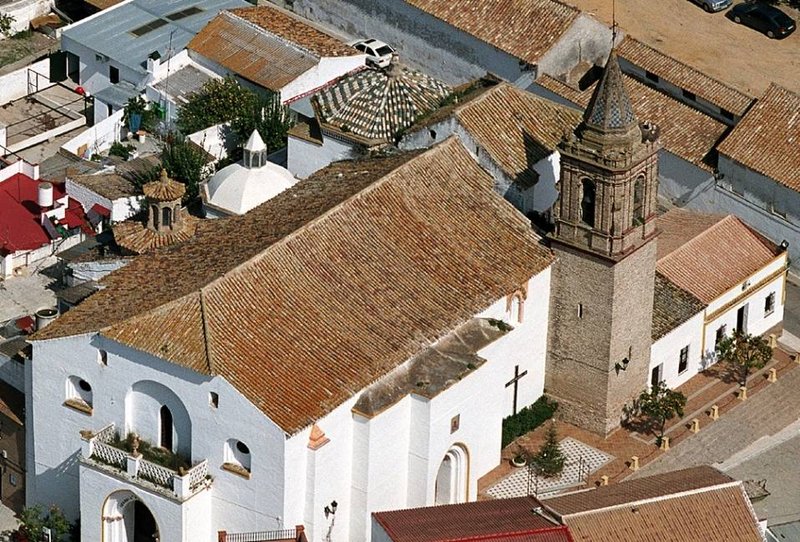Huévar del Aljarafe

Located on the highway between Seville and Huelva, this small municipality of the Aljarafe is surrounded by a beautiful farming landscape of fertile fields in which cereals, olive trees and herbaceous plants are cultivated. Within the township there are places of great beauty, such as the river banks or the holm-oak wood of Cortijo Espechilla. Within the town the most important monuments are the Church of the Asunción and the Arab oil mill of the Hacienda de la Motilla.
History
Even though it seems that its original name was Erbas, the present one comes from the surname of the Arab chief Ali-Al-Huevar.Its origins have been documented on the basis of the discovery of Roman archaeological remains.
With the Romans, the village became very important thanks to its fertile fields and its production of cereals and olive oil. The village and its surroundings have a great number of remains from this period.
It also has a few remains from the period of the Visigoths, including the chapel of La Motilla.
During Al-Andalus, Huévar grew fairly rapidly, and the ruins from this period include numerous tombs and the Arab palace, destroyed by Ferdinand III. On the site of the palace he built a church.
Following the Christian conquest the village underwent a period of decadence and began to lose importance, and between the 13th and 14th centuries had very few inhabitants..

- Max 19
- Min 10
- Max 66
- Min 50
- °C
- °F











